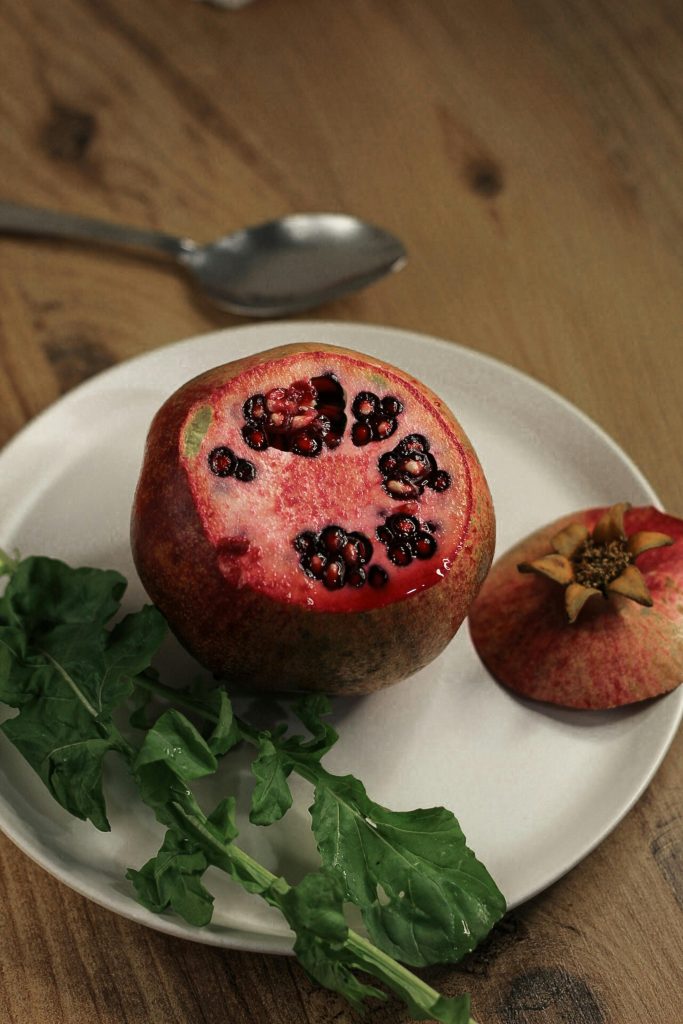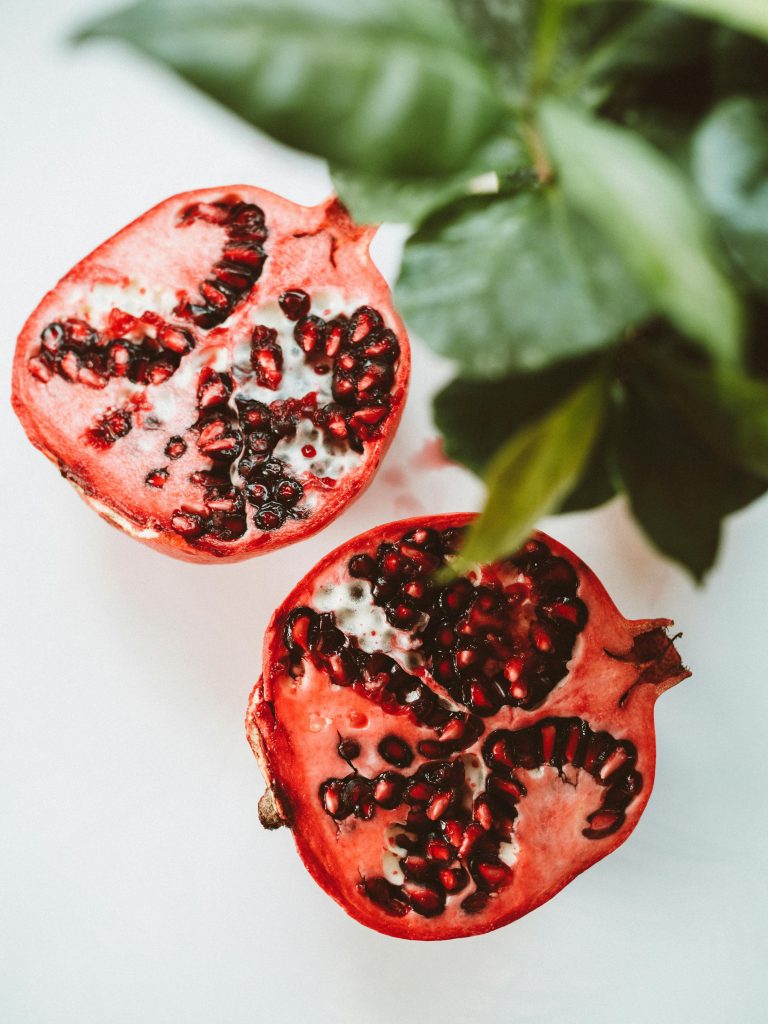Even when we don’t often see pomegranates in supermarkets. You might not even see them on your local grocery store shelves among all the other fruit choices. If you want to take the path less traveled, consider doing so in terms of your fruit.
They are still the most delicious fruits. The pomegranate tree has tiny pointed leaves which grows gradually. Over time of growth it can be a magnificent tree in any space.
When they bloom
The pomegranate blooms in spring and summer, it produces scarlet flowers from spring to summer and the pale yellow fruit, with their blushing pink to red cheeks, develop and hang on the tree during January and February.
Pomegranate adds a unique sweet, savoury flavour that blends with snacks, meals, meats, and salads. Adding pomegranate seeds to a salad is one of the best ways to use them in your daily diet.
Delicious and nutritious fruit
Pomegranates are not only tasty but also a powerhouse of nutrition. The juicy seeds (arils) are loaded with antioxidants, particularly polyphenols, which help combat oxidative stress and inflammation in the body. They are also an excellent source of vitamin C, which supports immune function, and vitamin K, which plays a role in blood clotting and bone health.
Additionally, pomegranates are rich in fiber, aiding digestion and promoting gut health. Whether eaten fresh, juiced, or incorporated into meals, they offer a delicious way to boost overall well-being.

Image: Pexels
Drought-tolerant
Pomegranate trees are well-suited for dry, arid climates and require minimal water once established. Unlike water-intensive fruit trees, pomegranates can thrive with deep but infrequent watering, making them an excellent choice for regions with water restrictions or gardeners looking to conserve water.
Their ability to withstand periods of drought ensures they remain productive even in challenging growing conditions, making them a sustainable and eco-friendly addition to your garden.
Low maintenance
One of the biggest advantages of growing pomegranates is their ease of care. These trees are naturally resistant to many pests and diseases, reducing the need for chemical treatments. They require only occasional pruning to maintain shape and remove dead wood, and a simple feeding routine with balanced fertiliser encourages healthy growth and fruit production.
With proper sunlight and well-draining soil, pomegranates can thrive with minimal effort from the gardener.
Attracts pollinators
The vibrant blossoms of pomegranate trees serve as a rich nectar source for bees, butterflies, and hummingbirds. By planting a pomegranate tree, you’re supporting pollinators, which are essential for the reproduction of many plants in your garden.
A thriving pollinator population can also lead to improved fruit yields, not just for the pomegranate tree itself but for other flowering plants nearby. This benefit extends beyond your garden, as pollinators play a crucial role in maintaining biodiversity and food production.

Image: Pexels
Long lifespan
A well-maintained pomegranate tree can live and produce fruit for several decades, offering a long-term return on investment. Unlike some fruit trees that may decline in productivity after a certain number of years, pomegranates continue to yield fruit season after season with proper care. Some trees, particularly in their native growing regions, have been known to thrive for over 100 years, making them a reliable and rewarding choice for home gardeners.
Versatile uses
Pomegranates have a wide range of culinary applications, making them a versatile fruit to have at home. The seeds can be eaten fresh, added to salads, or used as a garnish for desserts and savory dishes. Pomegranate juice is a flavourful and nutritious beverage, while the fruit can also be incorporated into jams, sauces, and marinades. Beyond the kitchen, the pomegranate’s rind and flowers have been used in traditional medicine, natural dyeing, and skincare, making every part of the tree valuable in some way.

Image: Pexels
Tolerant of different soils
Unlike many fruit trees that require specific soil conditions, pomegranate trees are adaptable and can thrive in a variety of soil types. Whether your garden has sandy, loamy, or even slightly clay-heavy soil, a pomegranate tree will grow as long as there is proper drainage. They also tolerate a range of pH levels, making them an accessible fruit tree for gardeners who may struggle with poor soil conditions. Improving the soil with compost and mulch further enhances their growth.
Compact growth
Pomegranates are naturally compact and do not require vast amounts of space, making them ideal for small gardens or urban settings. They can be grown as small trees or maintained as shrubs, allowing flexibility in garden design.
Additionally, they can be grown in large containers, making them suitable for patios and balconies. This feature makes them a great fruit tree choice for those who want homegrown produce but have limited space.
ALSO SEE: TOP CHOICES FOR FRUITING PLANTS THAT THRIVE IN PARTIAL SHADE
Featured image: Pixabay


